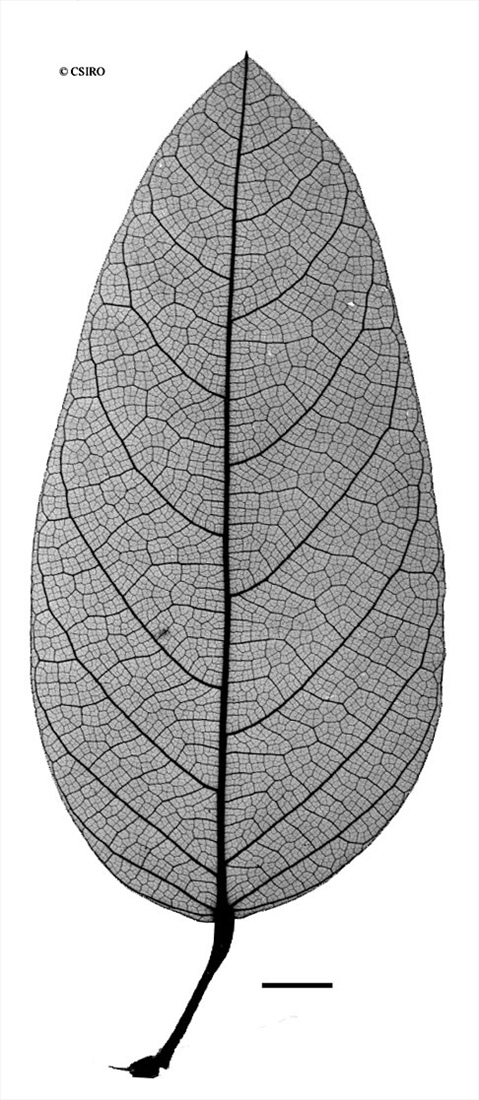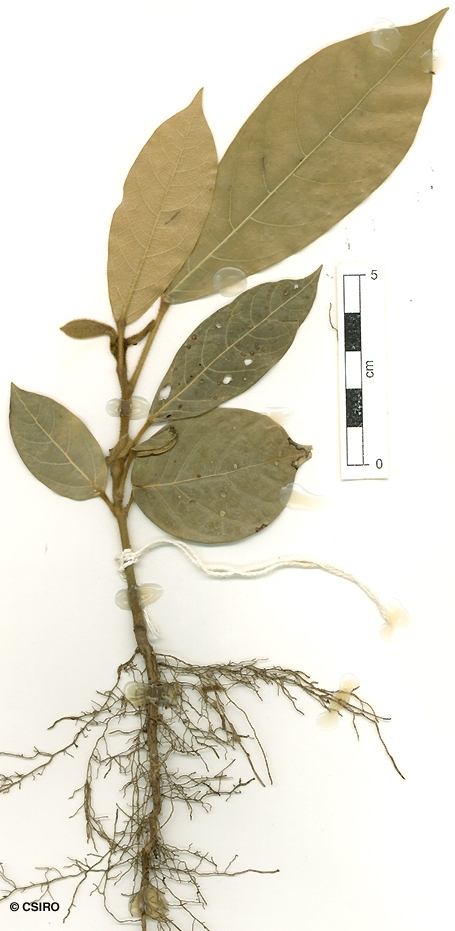Australian Tropical Rainforest Plants - Online edition
Carronia pedicellata Forman





Forman, L.L. (1982) Kew Bulletin 37(3): 371. Type: Queensland, Babinda, Nov 1977., Jago 4. Holo: QRS. Iso: K.
Leaf blades about 6.5-25 x 3-11 cm, petioles about 1-5 cm long. Underside of the leaf blades densely clothed in pale hairs. Petioles and twigs densely clothed in pale brown hairs. Lateral veins about 10-15 on each side of the midrib. Pulvinus up to 6-10 mm long. Axillary and terminal buds clothed in dark brown hairs.
Male flowers: Inflorescence about 8-17 cm long, pedicels about 1-2 mm long. Sepals about 18 per flower, outer sepals about 2.5 mm long. Petals six per flower. Stamens 6, about 1 mm long, outer three stamens shorter than the inner three. Female flowers: Sepals up to 24 per flower, the innermost ones up to 3 mm long. Petals six (?), each about 1 mm long. Carpels six, each about 1 mm long (i.e. carpel + style). Ovaries densely clothed in comparatively long dark brown hairs. Ovules two (?) per ovary.
Fruits about 13-14 x 12-13 cm, densely clothed in hairs. Seeds about 13 x 10 mm. Embryo horseshoe-shaped. Cotyledons about 10-11 mm long, radicle about 1 mm long.
First pair of leaves ovate, leaf blade about 4-5 x 3 cm, apex acuminate, base obtuse. At the tenth leaf stage: leaf blade ovate to lanceolate or oblanceolate, apex acuminate, base attenuate or auriculate. Midrib raised on the upper surface. Young leaves and stems clothed in brown or dark brown hairs. Seed germination time 58 days.





